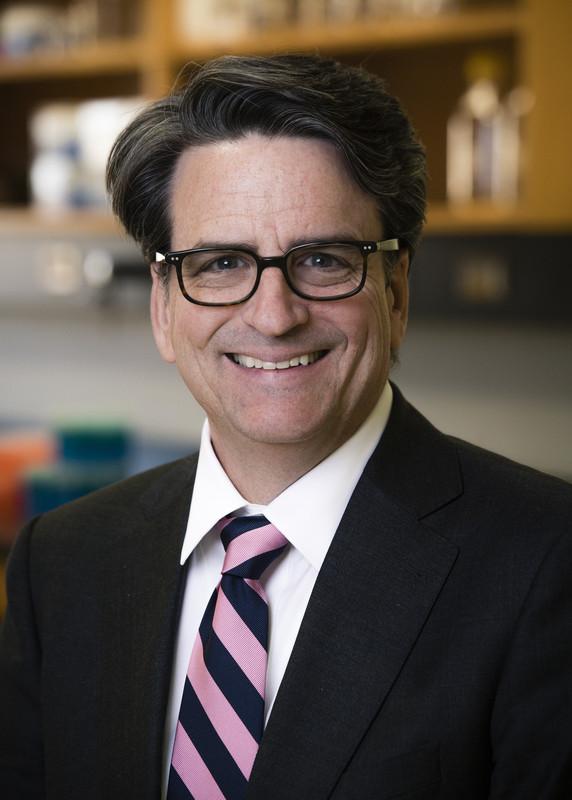A mouse model and previous studies suggest that genetic intervention in SHANK3-related ASD may be most effective earlier in development

Credit: UAB
BIRMINGHAM, Ala. – A mouse study by Craig Powell, M.D., Ph.D., and colleagues suggests that early genetic rescue may be a potential therapy in autism spectrum disorder, or ASD. Powell looked at one gene called SHANK3, whose alteration is seen in about 0.5 percent of ASD patients.
The study is published in eNeuro and was highlighted on the ASD news site Spectrum. Powell is professor and chair of the Department of Neurobiology at the University of Alabama at Birmingham and also heads the UAB Civitan International Research Center. The UAB researcher has a longstanding focus on autism, intellectual disability and cognitive dysfunction.
The SHANK3 gene product acts in the brain as a postsynaptic scaffolding protein. A synapse is a gap between two nerve cells where a signal is passed from one nerve to the other. A human brain may have more than 100 trillion synapses in its neuronal circuitry.
Powell and colleagues previously showed that mice deficient in SHANK3 protein have behavioral abnormalities, including repetitive grooming and deficits in social interaction, locomotor activity and rearing. Rearing is standing on hind legs to investigate the surroundings. Some of these behaviors are reminiscent of ASD in humans, which is characterized by deficits in social interaction and communication, restricted interests, and repetitive behaviors.
Powell’s lab and other labs, including that of Guoping Feng, Ph.D., Massachusetts Institute of Technology, have sought mouse models where a SHANK3 deficit could be reversed early or later in life, to see if that reversal removed some of the behavioral deficits. Powell says his and Feng’s labs used different experimental approaches, and their two studies are complementary.
Powell’s lab used genetic tools to construct mice that had a stop signal inserted into one or both genes for SHANK3, creating heterozygous or homozygous mice for the mutation they call ShankE13. The activation of another inserted gene called Cre-recombinase can excise that stop signal, restoring full function of the mutated SHANK3 gene.
In Feng’s mouse model, the SHANK3 gene was activated when the mice were given tamoxifen, which leads to some toxicity, including weight loss. In the Powell mouse model, the Cre-recombinase was negatively controlled by the antibiotic doxycycline; as long as mice were fed doxycycline, the Cre-recombinase was supposed to be shut off. When the doxycycline is stopped, the SHANK3 gene should be restored. Another genetic tool in the mouse model was supposed to limit reactivation of the SHANK3 gene to the striatum and cerebellum of the brain.
The plan was to activate the Cre-recombinase at different ages and test those mice for changes in ASD-like behaviors.
This elegant approach had two problems, the researchers learned. First, there was more widespread rescue of the SHANK3 gene in the brain than expected, including in the cortex. Second, the doxycycline control was “leaky,” allowing expression of the Cre-recombinase even as the mice were fed the antibiotic. Thus, Powell and colleagues were only able to look at the effect of early developmental genetic reversal of ShankE13, occurring about embryonic day 18.
Still, as Powell told Spectrum, “It is important to publish experiments that do not work out exactly as planned.”
In a wide variety of behavioral tests, the researchers found that early genetic restoration of SHANK3 rescued a variety of behaviors that included repetitive grooming and social, locomotor and rearing deficits.
The social tests included the amount of social interaction with another mouse; social recognition memory, where a test mouse was introduced to another mouse, and then reintroduced three days later; and social novelty exploration, which compares the amount of time spent with a novel caged mouse versus an inanimate object.
The locomotor tests included placing mice in a novel cage with minimal bedding and measuring how much they freely explored over two hours. In a different series of tests, the mice — as expected — showed no changes in anxiety-related behaviors. That lack of change in anxiety in mutant and rescued mice had also been shown in previous work.
“Overall,” Powell said, “our studies suggest early genetic rescue as a potential genetic therapy for ASD-like behaviors in ASD associated with SHANK3 deletion or mutation. Taken together with previously published studies, genetic intervention in SHANK3-related ASD may be most effective earlier in development.”
###
Co-authors with Powell for the study, “Early restoration of Shank3 expression in Shank3 knockout mice prevents core ASD-like behavioural phenotypes,” are Thomas C. Jaramillo, Jeremy M. Reimers, Christine O. Escamilla and Shunan Liu, University of Texas Southwestern Medical Center, Dallas; and Zhong Xuan, UAB Department of Neurobiology.
Powell moved to UAB from the Southwestern Medical Center in 2018. At UAB, Powell holds the Virginia B. Spencer Endowed Professorship in Neuroscience.
Support came from National Institutes of Health grants HD069560 and HD069560-S1, Autism Speaks, an Autism Science Foundation Pre-doctoral Fellowship, The Hartwell Foundation, gifts from Clay Heighten and Debra Caudy, and BRAINS for Autism.
Media Contact
Jeff Hansen
[email protected]
Original Source
https:/
Related Journal Article
http://dx.




